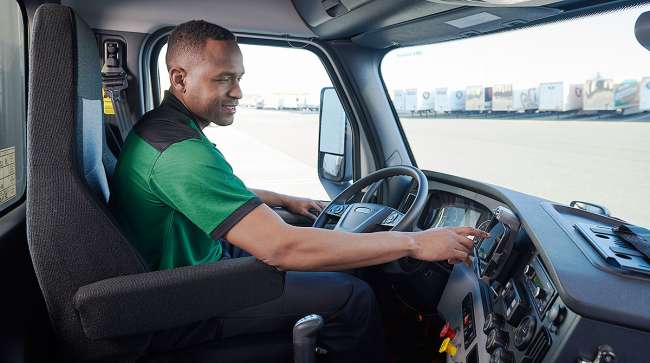Senior Reporter
Driver Shortage Is Over Temporarily

[Ensure you have all the info you need in these unprecedented times. Subscribe now.]
The often discussed driver shortage is over — at least for the time being — as a result of the COVID-19 pandemic, the deepening U.S. recession and a falloff in the amount of freight being hauled by many sectors of trucking, industry experts said.
Before the novel coronavirus began to dominate the headlines, American Trucking Associations maintained that the industry was short an estimated 60,000 drivers as a result of retirements and the sometimes slow pace of getting new men and women into the industry. While those factors remain true, what has changed in short order is the economic environment the industry currently confronts.
“The fundamentals of why we had a driver shortage did not go away,” ATA Chief Economist Bob Costello told Transport Topics. “Demographic issues, age, gender, lifestyle issues. But, for the moment, what has changed is the demand side of the equation has fallen significantly.”

How can trucking companies adjust to ensure that essential freight keeps moving while protecting their workers from coronavirus? Host Seth Clevenger speaks with Lilli Chiu of Hub International and Dave Cox of Polaris Transportation. Hear a snippet, above, and get the full program by going to RoadSigns.TTNews.com.
Costello emphasized some sectors of the trucking industry have thrived during the crisis, restocking grocery stores and delivering medical supplies. But others — including tanker and flatbed operators — have seen demand drop.
Before the pandemic, Costello said the driver shortage was the industry’s biggest challenge, potentially increasing to 105,000 drivers in 2023 and 160,000 drivers in 2028. The most recent DAT Truckload Volume Index, which measures dry van, refrigerated and flatbed loads moved by truckload carriers, on a year-over-year basis fell 19% in March and 8% in April.
As of May 22, many Department of Motor Vehicle offices remained closed or had significantly restricted services, limiting availability of testing for CDL candidates to take driving tests.
“That means the pipeline of incoming drivers — at least momentarily — is much lower,” said Costello. “That may not seem like a big deal right now, but we have as an industry always relied on that pipeline of drivers coming into the industry.”
In this week's COVID-19 market update, our forecast models show agreement on continued rate growth heading into the summer. Plus:
- Load-to-truck ratios fall back in line with 2019
- Rates in recovery mode
- Forecast model outlook for van and reeferhttps://t.co/xakp7NBpre — DAT Freight & Analytics (@LoadBoards) May 28, 2020
Compounding that challenge are changes in how training academies are providing instruction to new entrants, said Don Lefeve, CEO of the Commercial Vehicle Training Association, which advocates for the trucking industry’s training schools. He told TT that social distancing guidelines are limiting the number of students a teacher can instruct at one time.
“You can’t have that many people in the truck anymore,” he said. “We will not be able to ramp back up to full capacity because we have to train under the Centers for Disease Control guidelines, social distancing, wearing masks, which limits the number of students you can have in a truck at a time. It’s going to be a slow, hard slog.”
CVTA said 300,000 to 480,000 people on average obtain CDLs in the U.S. each year. But it’s unclear how many go on to driving Class 8 trucks. Some drive school buses or motorcoaches, or hold a CDL as an added safety credential. Because of the various COVID-19-related issues, Lefeve estimates the number of people obtaining CDLs will drop by at least 40% this year.
Longer term, technologies such as driving simulators could affect how training is conducted, he added. “It’s an option that more and more schools are looking toward,” said Lefeve. “There’s no substitute for getting behind the wheel and getting comfortable in the cab, but simulators are a fantastic way to aid in training.”
For the drivers out there looking for work, Jeremy Reymer, CEO of recruiting firm DriverReach, told TT that experienced, motivated drivers with good safety records can get a job.
“Any of the truck drivers that are unemployed, let go, furloughed, they’re going to find employment, there is employment out there,” he said. “But I think companies are more selective now. If you’ve got a good safety record and a good attitude, you’ll be fine.”
Both Costello and Lefeve believe the market for drivers will tighten up later this year once the economy regains momentum and the effects of the downturn on the labor force are fully realized.
“When the economy gets back, I fully expect the driver shortage to come back, maybe even worse than before,” Costello said. “We don’t know how many people will take this opportunity for people to leave the industry.”
“I think the DMV closing impact is huge,” added Lefeve. “And even as states begin to return to providing services, they’re going to need help on the driver’s license side. There’s going to be a backlog.”
Want more news? Listen to today's daily briefing:




